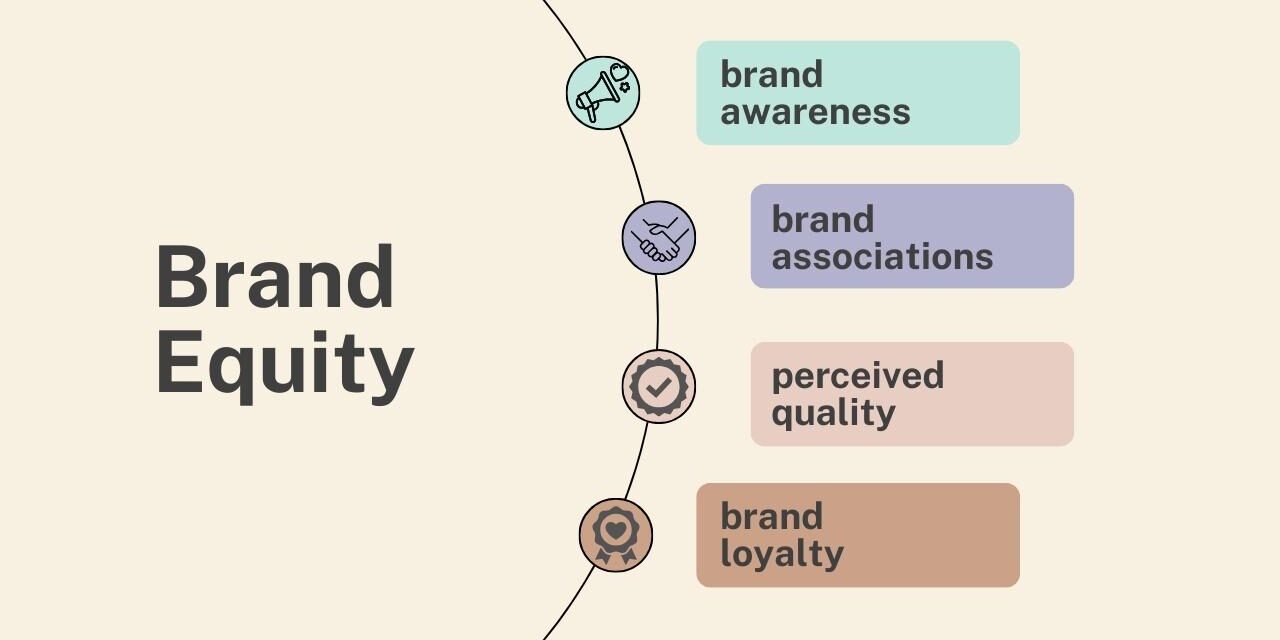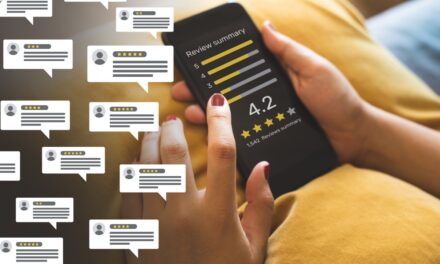Introduction
In today’s digital age, the power of a brand cannot be underestimated. As a coach venturing into the realm of digital marketing, I quickly realized that my brand’s strength wasn’t just about a catchy logo or a memorable slogan. It was about the value, trust, and reputation I could build in the minds of my audience. This intangible asset, known as brand equity, plays a pivotal role in determining my online success. Whether I’m trying to attract new clients, retain loyal ones, or stand out in a saturated market, understanding and leveraging the power of brand equity is crucial. In this blog post, I’ll delve deep into the intricacies of brand equity, shedding light on its importance, how to build it, and most importantly, how to leverage it for maximum impact. Join me on this journey to unlock the true potential of your brand in the digital world.
Brand Equity Basics
When I first embarked on my digital marketing journey, the term “brand equity” seemed like just another buzzword. But as I delved deeper, I realized its profound significance. At its core, brand equity refers to the value and perception a brand holds in the eyes of its customers. It’s the differential effect that knowing the brand name has on customer response to the product or its marketing.
Imagine two identical coaching services – one from a well-known, trusted brand and the other from an unknown entity. Naturally, clients are more inclined to choose the recognized brand, even if the services are the same. That’s the power of brand equity.
For me, brand equity encompasses several elements:
- Brand Awareness: How familiar my target audience is with my brand.
- Brand Associations: The attributes and emotions clients connect with my brand.
- Perceived Quality: The perceived value and quality of my services.
- Brand Loyalty: The likelihood of clients returning and recommending my services.
Understanding these components is the first step in harnessing the power of brand equity. As we move forward, I’ll share insights on building and leveraging each of these elements to elevate your coaching brand.
Importance of Brand Equity
In the bustling digital landscape, where countless coaches vie for attention, brand equity has become my secret weapon. Its importance transcends beyond just recognition; it’s about carving a unique space in the minds of potential clients and establishing trust.
1. Competitive Advantage
- With strong brand equity, I’ve found that I stand out in the crowded market. Clients are more likely to choose my services over others because of the trust and value associated with my brand.
2. Pricing Power
- Because of the perceived value of my brand, I can command premium pricing. Clients are willing to pay more for a service they trust and value.
3. Customer Loyalty
- One of the most rewarding aspects of strong brand equity is the loyalty it fosters. My clients not only return but also become advocates, recommending my services to others.
4. Resilience in Market Fluctuations
- In times of market downturns or increased competition, my brand equity acts as a buffer. It provides stability and ensures that clients stick around.
5. Effective Marketing
- With a well-established brand, my marketing efforts become more efficient. The strong foundation means I can build more targeted and impactful campaigns.
In essence, brand equity isn’t just about recognition; it’s about building a legacy. It’s the difference between being just another coach and being the go-to expert in the field.
Building Strong Brand Equity
Building a robust brand equity isn’t an overnight endeavor. It’s a strategic process that requires consistent effort, understanding, and adaptation. As I navigated the digital marketing landscape, I identified several key steps that have been instrumental in fortifying my brand’s equity.
1. Clear Brand Identity
- Before anything else, I had to define what my brand stood for. This involved crafting a clear mission, vision, and values. It’s essential to know the unique proposition I bring to the table and ensure it resonates with my target audience.
2. Consistent Branding
- From my website’s design to the tone of my social media posts, consistency has been key. It’s not just about aesthetics; it’s about ensuring every touchpoint reinforces my brand’s message and promise.
3. Quality Service Delivery
- At the heart of brand equity lies the actual value I provide. Ensuring top-notch service, addressing client concerns promptly, and going the extra mile have all contributed to enhancing my brand’s perceived value.
4. Engage and Listen
- Engaging with my audience, whether through webinars, social media, or feedback surveys, has provided invaluable insights. Listening to their needs, preferences, and feedback has allowed me to tailor my offerings and strategies.
5. Educate and Provide Value
- I’ve consistently shared knowledge, tips, and resources related to coaching and digital marketing. This not only positions me as an expert but also builds trust and rapport with my audience.
6. Collaborations and Partnerships
- Aligning with reputable brands and influencers in the industry has amplified my reach and credibility.
Remember, building brand equity is a marathon, not a sprint. It’s about laying a strong foundation, nurturing relationships, and continuously evolving to meet the needs and expectations of the audience. As coaches, our brand’s strength is a testament to our commitment, expertise, and the value we bring to our clients.
Leveraging Brand Equity
Once I had built a strong brand equity, the next step was to leverage it to amplify my reach and impact. Harnessing the power of brand equity has opened doors to opportunities and growth that were previously out of reach. Here’s how I’ve been leveraging my brand’s strength:
1. Expand Offerings
- With a trusted brand, I introduced new services and products. My existing clients were more receptive, and potential clients were more inclined to try them out, knowing the value my brand delivers.
2. Strategic Collaborations
- Leveraging my brand’s reputation, I’ve formed partnerships with other reputable brands and influencers. These collaborations have expanded my reach and brought in diverse audiences.
3. Premium Pricing
- Given the perceived value associated with my brand, I’ve been able to command higher prices for my services without alienating my client base.
4. Referral Programs
- Capitalizing on the loyalty of my existing clients, I introduced referral programs. Happy clients became brand ambassadors, bringing in new clients and further solidifying my brand’s presence.
5. Targeted Marketing Campaigns
- With a strong brand image, my marketing campaigns became more streamlined. I could focus on reinforcing my brand’s message and targeting more niche segments.
In essence, leveraging brand equity is about capitalizing on the trust, recognition, and value associated with my brand. It’s a strategic move that, when done right, can propel a brand to new heights, creating a ripple effect of growth and opportunities.
Brand Equity Measurement
Measuring brand equity has been a pivotal aspect of my digital marketing journey. It’s not enough to build and leverage brand equity; I needed to quantify it to understand its impact and make informed decisions. Here’s how I’ve approached the measurement of my brand’s equity:
1. Brand Awareness Surveys
- I regularly conduct surveys to gauge how many people within my target audience recognize my brand. It gives me a clear picture of my brand’s visibility in the market.
2. Net Promoter Score (NPS)
- This metric helps me understand how likely my clients are to recommend my services to others. A high NPS indicates strong brand loyalty and satisfaction.
3. Brand Association Analysis
- Through feedback forms and direct interactions, I assess the attributes and emotions clients associate with my brand. It provides insights into the brand’s perceived strengths and areas of improvement.
4. Customer Retention Rate
- Monitoring how many clients return for repeat services gives me a direct measure of brand loyalty and the value I provide.
5. Social Media Engagement
- Metrics like shares, likes, and comments on my posts indicate the level of engagement and resonance of my brand message with the audience.
In a nutshell, measuring brand equity isn’t just about numbers. It’s about understanding the nuances of client perception, loyalty, and value. Regularly assessing these metrics ensures that I stay on the right track, making adjustments as needed to continuously enhance my brand’s equity.
Brand Equity and Consumer Perception
One of the most enlightening realizations I’ve had is the intricate link between brand equity and consumer perception. The way clients perceive my brand directly influences its equity, shaping its overall success and impact in the market.
1. Trust and Credibility
- The stronger my brand equity, the more trust and credibility I’ve garnered among my clients. They believe in the promises I make and the value I offer, leading to a deeper, more meaningful relationship.
2. Emotional Connection
- Beyond just the services I provide, my brand equity has fostered an emotional connection with my clients. They resonate with my brand’s values, mission, and vision, making them more loyal and invested.
3. Decision Making
- A positive consumer perception, bolstered by strong brand equity, plays a pivotal role in decision-making. Clients are more likely to choose my services over competitors, even if they’re encountering my brand for the first time.
4. Word of Mouth
- The ripple effect of positive consumer perception is profound. Satisfied clients become brand advocates, sharing their experiences and recommending my services to others.
In essence, consumer perception is the mirror reflecting my brand’s equity. By continuously nurturing and enhancing this perception, I’ve been able to solidify my brand’s position in the market, ensuring sustained growth and success.
Brand Equity and Business Growth
The synergy between brand equity and business growth has been undeniable in my journey. As my brand’s equity strengthened, I witnessed a direct, positive impact on my business’s expansion and success.
1. Increased Client Acquisition
- With a robust brand reputation, I’ve attracted a larger pool of potential clients. The trust and value associated with my brand act as magnets, drawing clients towards my services.
2. Higher Client Retention
- Strong brand equity has not only helped me acquire new clients but also retain existing ones. The consistent value and trust I offer make clients more likely to stick around and continue availing of my services.
3. Expansion Opportunities
- As my brand’s equity grew, doors to new opportunities opened. Whether it’s venturing into new markets, introducing additional services, or forming strategic partnerships, the strength of my brand has been a key enabler.
4. Enhanced Marketing Efficiency
- With a well-established brand, my marketing efforts yield better results. The foundation of trust and recognition means I can focus on more advanced strategies, targeting niche segments and achieving higher conversion rates.
In a nutshell, brand equity is the fuel driving my business’s growth engine. It’s the intangible asset that has tangible results, propelling my coaching services to new heights and ensuring long-term success in the competitive digital landscape.
Brand Equity Strategies
Crafting and implementing effective brand equity strategies has been a cornerstone of my success. These strategies have not only fortified my brand’s presence but also ensured its continuous evolution in the dynamic digital landscape. Here are the key strategies I’ve employed:
1. Consistent Brand Messaging
- Whether it’s my website, social media, or email campaigns, I ensure that my brand’s voice, tone, and messaging remain consistent. This consistency reinforces my brand’s identity and makes it easily recognizable.
2. Engaging Content Creation
- I prioritize creating valuable, relevant content that resonates with my target audience. From informative blog posts to interactive webinars, offering value has been a surefire way to enhance my brand’s equity.
3. Feedback Loop
- Actively seeking feedback and acting on it has allowed me to align my services with client expectations. This continuous improvement cycle has bolstered client satisfaction and brand loyalty.
4. Community Building
- I’ve invested in building a community around my brand. Engaging with my audience through forums, social media groups, and events has fostered a sense of belonging and loyalty.
5. Leverage Testimonials and Reviews
- Showcasing positive testimonials and reviews amplifies trust. Potential clients often rely on peer reviews, and having a repository of positive feedback enhances credibility.
6. Continuous Learning and Adaptation
- The digital landscape is ever-evolving. I prioritize staying updated with the latest trends, tools, and techniques, ensuring my brand remains relevant and ahead of the curve.
7. Collaborative Partnerships
- Forming strategic partnerships with complementary brands has expanded my reach and brought in diverse audiences, further strengthening my brand’s equity.
In essence, building brand equity is a continuous journey, not a destination. By employing these strategies and remaining adaptable, I’ve ensured that my brand remains a force to be reckoned with, paving the way for sustained growth and success.
Enhancing Brand Value
Elevating my brand’s value has been a continuous endeavor, going beyond just offering quality services. It’s about creating an experience, a promise of excellence that clients can rely on. Here’s how I’ve approached enhancing my brand’s value:
1. Personalized Experiences
- I prioritize understanding each client’s unique needs and tailoring my services accordingly. This personal touch fosters deeper connections and showcases my commitment to their success.
2. Continuous Innovation
- Staying stagnant is not an option. I constantly innovate, introducing new tools, techniques, and strategies to offer the best to my clients.
3. Transparency and Integrity
- Being transparent in my dealings and upholding the highest standards of integrity has solidified trust and respect among my clients.
4. Community Engagement
- Actively participating in community events, webinars, and workshops not only enhances my brand’s visibility but also positions it as a thought leader in the industry.
In essence, enhancing brand value is about going the extra mile, ensuring every interaction and offering adds value, and consistently exceeding client expectations.
Brand Equity Best Practices
Over the years, I’ve realized that building and maintaining brand equity requires a strategic approach, rooted in best practices that have stood the test of time. Here are the best practices I’ve adhered to, ensuring my brand’s equity remains robust and impactful:
1. Clear Brand Positioning
- I’ve always ensured that my brand has a clear, unique positioning in the market. Knowing what sets me apart and consistently communicating that differentiation is crucial.
2. Authenticity
- Authenticity breeds trust. I’ve made it a point to always be genuine in my communications, promises, and service delivery.
3. Regular Brand Audits
- Periodically, I conduct brand audits to assess the health of my brand equity. This helps identify areas of improvement and strategize accordingly.
4. Engage and Evolve
- Engaging with my audience and being receptive to their feedback has allowed my brand to evolve in alignment with their needs and preferences.
5. Protect Brand Reputation
- Proactively addressing any negative feedback, ensuring quality control, and upholding ethical standards are essential to protect and enhance my brand’s reputation.
6. Consistent Visual Identity
- From logos to color schemes, maintaining a consistent visual identity across all platforms reinforces brand recognition.
7. Educate and Empower
- I’ve focused on educating my audience, providing them with resources, insights, and tools that empower them and enhance their association with my brand.
Incorporating these best practices has been instrumental in ensuring that my brand equity remains strong, resilient, and continues to drive growth and success.
Conclusion
Navigating the world of digital marketing, I’ve come to appreciate the unparalleled power of brand equity. It’s more than just a buzzword; it’s the lifeblood of a brand’s success and longevity. From understanding its intricacies to leveraging its strength, brand equity has been the compass guiding my journey. For coaches new to this realm, remember that building and nurturing brand equity is a continuous endeavor. It’s about creating trust, delivering value, and ensuring every interaction reinforces your brand’s promise. By incorporating the insights and best practices shared in this post, you too can harness the power of brand equity, setting your coaching brand on a path of sustained growth and recognition. As you embark on this journey, stay authentic, stay engaged, and always prioritize your clients’ needs and perceptions. The road to strong brand equity is paved with consistency, innovation, and unwavering commitment.











